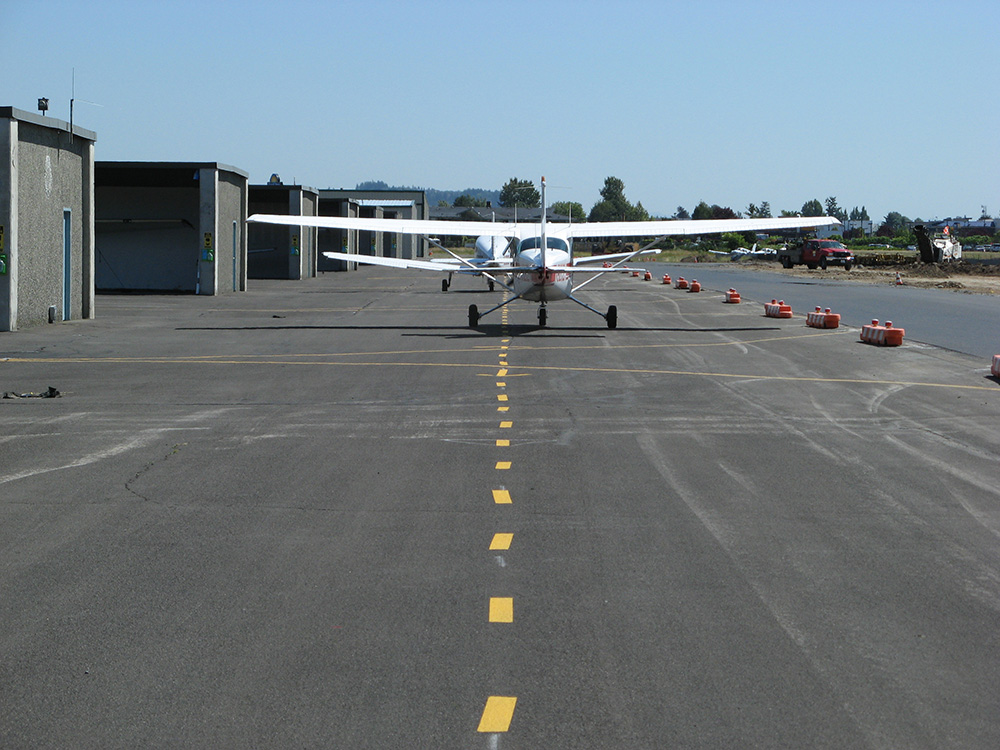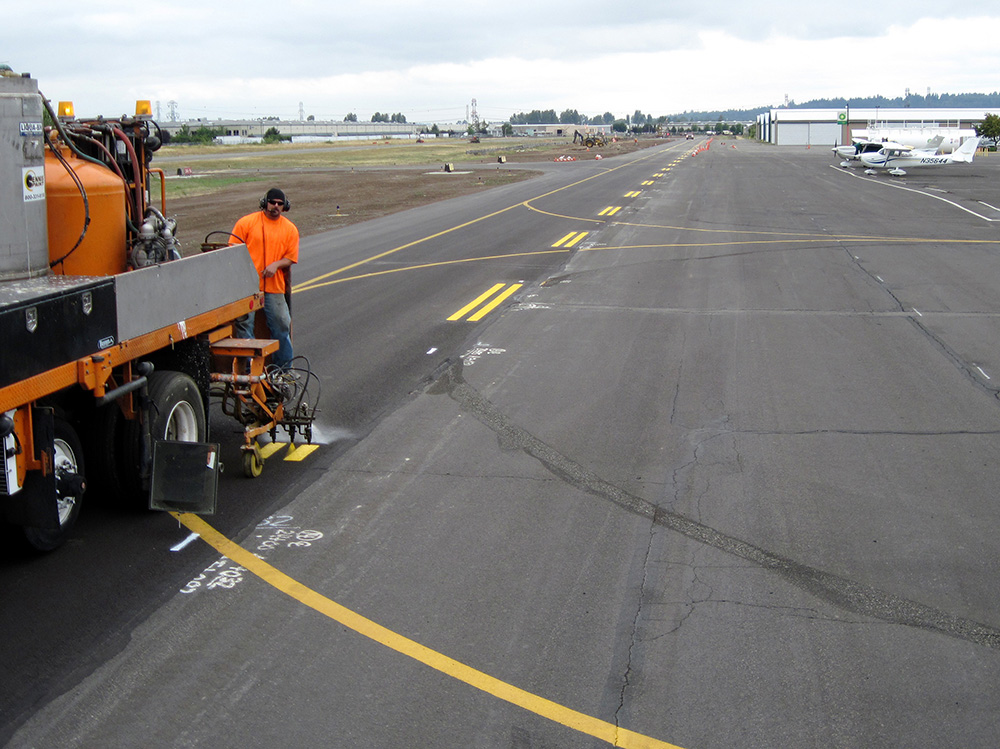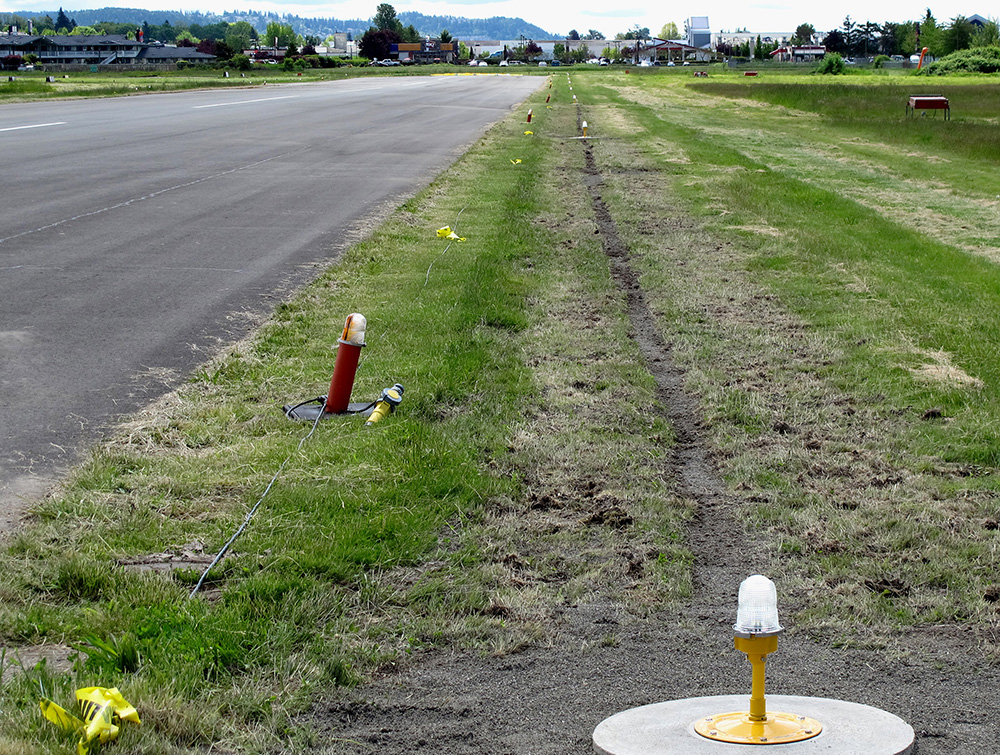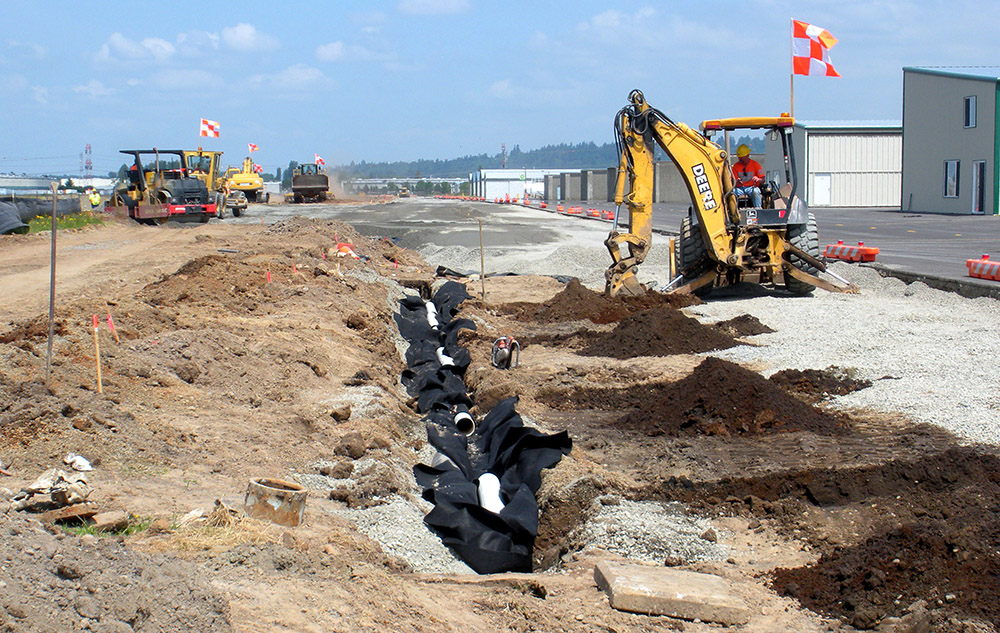Early stages of parallel taxiway construction including sub-drain system
Federal funding provided by the FAA’s Airport Improvement Program (AIP) at a 95% reimbursement rate plus another 2.5% from Washington State’s WSDOT Aviation for airfield upgrades offer a level of financial support that few airport owners would choose to pass on. The City of Auburn and Auburn Municipal Airport are of this same mindset. With the assistance of substantial funding, an airport can progress through much needed improvements over a series of consecutive years.
Auburn Municipal Airport’s recent airfield development projects involve several improvements to its parallel taxiway system and runway. Reid Middleton worked with the City of Auburn to design a reconfiguration of the parallel taxiway system that was first constructed in 1969 as a portion of the original airfield. To meet FAA’s current safety standards and remain eligible for future FAA funding, changes were required. These changes included greater lateral separation between the runway centerline and the parallel taxiway’s centerline.

Following design and a typical bidding process, construction for the taxiway’s reconfiguration project began in June 2009 and was completed the following September. As with the majority of airport construction projects, there was need to maintain routine air operations to the greatest extent and to establish a safety/phasing plan that allowed independent movement of both aircraft and construction equipment. This was quite challenging in Auburn’s case due to an already narrow corridor between the airfield and the existing hangars. The taxiway reconfiguration included the installation of a new taxiway edge lighting system.
As the taxiway project got underway, it had become apparent to the Airport that the health of the runway lighting system was failing at an accelerated rate. The City looked to Reid Middleton’s team to design a new runway edge lighting system and the FAA determined it was appropriate to bid the runway lighting as a stand-alone project.

The runway edge lighting construction was scheduled to being in the late spring of 2011. However, the reliability of the existing runway lighting system began a final nose-dive in February 2011. The very real possibility existed for no runway lighting and partial facility paralysis until the new system could be completed. Fortunately, WSDOT Aviation has a temporary edge lighting system that had been developed some years prior that just happened to be available, so it was assembled in relatively short order once delivered to the Auburn Airport. The temporary lighting system provided for normal runway operational capability until the installation of the new system was begun in late April. The temporary system also helped facilitate partial runway air operations, through the phased construction, until the new permanent lighting system was functional in early June 2011.

Without grant funds available through FAA and WSDOT, the pilots and tenants who operate from Auburn Municipal Airport would not be enjoying an airfield that meets current safety standards. This facility is one of hundreds of general aviation airports that benefit from funding programs that meet their mission for an improved aviation infrastructure.

